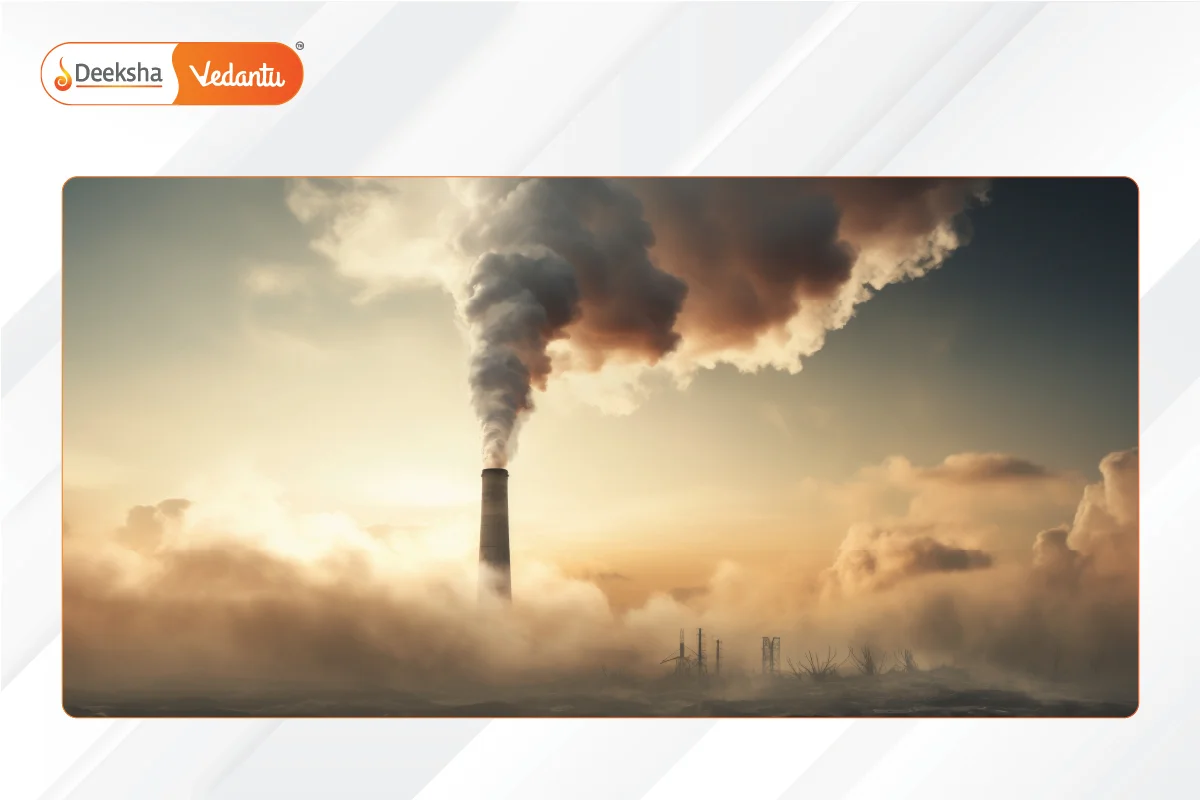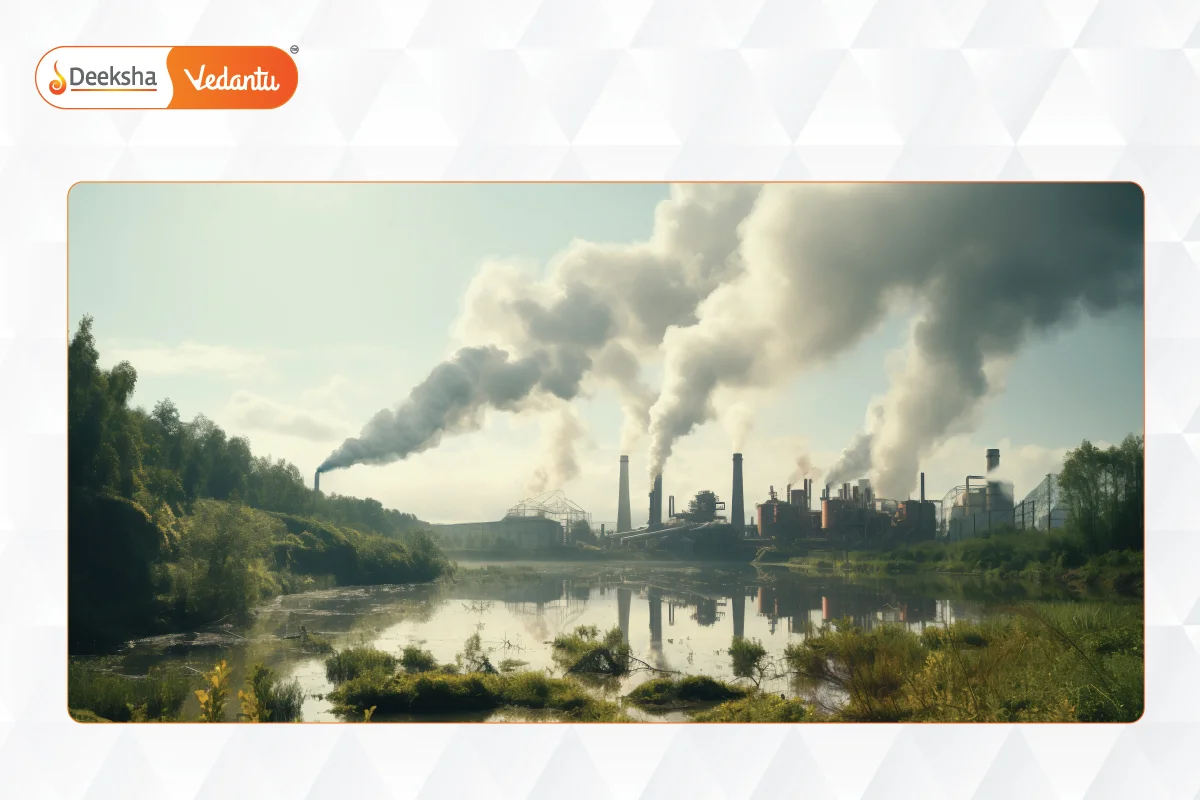Air pollution is the presence of harmful substances in the air, such as gases, dust, and smoke, that can cause health problems for humans, animals, and plants.


Types of Air Pollutants
- Primary Pollutants: Directly cause air pollution (e.g., sulfur dioxide from factories).
- Secondary Pollutants: Formed by the reaction of primary pollutants (e.g., smog, a mix of smoke and fog).
Causes of Air Pollution
- Burning of Fossil Fuels: Releases sulfur dioxide and carbon monoxide.
- Automobiles: Emit greenhouse gases and pollutants that cause health issues.
- Agricultural Activities: Produce ammonia and chemicals from insecticides and fertilizers.
- Factories and Industries: Release carbon monoxide, hydrocarbons, and other chemicals.
- Mining Activities: Release dust and harmful chemicals.
- Domestic Sources: Cleaning products and paints release toxic chemicals into the air.
Effects of Air Pollution
- Diseases: Causes respiratory disorders, heart diseases, lung cancer, pneumonia, and asthma.
- Global Warming: Increase in Earth’s temperature due to greenhouse gases, leading to melting glaciers and rising sea levels.
- Acid Rain: Harmful gases mix with water droplets to form acid rain, damaging life.
- Ozone Layer Depletion: Chlorofluorocarbons and other chemicals reduce the ozone layer, allowing harmful UV rays to reach Earth.
- Effect on Animals: Pollutants affect aquatic life and force animals to relocate, leading to extinction.
Air Pollution Control
- Avoid Using Vehicles: Use public transport or walk for short distances.
- Energy Conservation: Switch off electrical appliances when not in use and use energy-efficient devices.
- Use of Clean Energy Resources: Utilize solar, wind, and geothermal energies to reduce pollution.
FAQs
Factories and industries emit large amounts of carbon monoxide, hydrocarbons, and other chemicals that degrade air quality.
Air pollution releases chlorofluorocarbons and other chemicals that deplete the ozone layer, allowing harmful UV rays to reach Earth, causing skin diseases and eye problems.
Air pollution increases greenhouse gases in the atmosphere, which traps heat and raises Earth’s temperature, leading to global warming.
Air pollution is the contamination of air by harmful substances such as gases, dust, and smoke, which can harm humans, animals, and plants.
Air pollution causes respiratory disorders, heart diseases, lung cancer, pneumonia, and asthma. It can also increase mortality rates.
Primary Pollutants: Directly cause air pollution (e.g., sulfur dioxide).
Secondary Pollutants: Formed by reactions of primary pollutants (e.g., smog).
Air pollution is the contamination of air by harmful substances such as gases, dust, and smoke, which can harm humans, animals, and plants.











Get Social